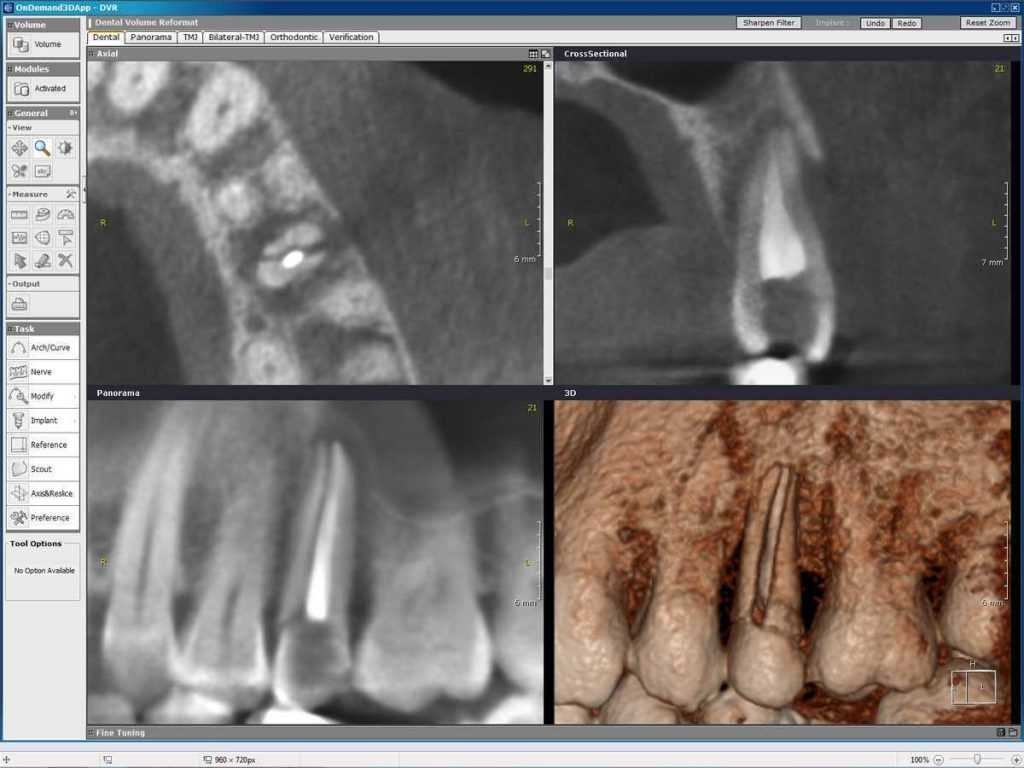The Apolonija Dental Clinic is the first institution in Croatia that has introduced 3D diagnostics in its practice. Together with the company Zubni rendgen dr. Lauc, within the LDMI Group, the Apolonija Dental Clinic has become the leading center for 3D diagnostics.
Technological advances lead to key changes in medicine. Use of advanced technologies increases the success of treatments. Therefore, the use of state-of-the-art technology is the key to our business.
In this article, learn more about the following topics:
- What is 3D diagnostics
- What is a CBCT machine
- What it is used for
- Advantages of 3D CBCT diagnostics
- Why is 3D CBCT diagnostics important when installing dental implants?
What is CBCT?
CBCT diagnostics is one of the most revolutionary changes that have occurred in dental medicine. With the help of a CBCT machine, we are able to see tissue structures which are deeply hidden.
What is a CBCT machine?
A CBCT machine is a CT machine that creates 3D images of a tooth and surrounding tissue.
A CBCT machine provides high quality dental imaging needed for diagnosis and planning of dental procedures and removal of possible pathological changes.
[FT] 3D CBCT image
Our CBCT machines combine a low radiation dose and fast 3D imaging.
What is a CBCT machine used for?
3D CBCT diagnostics is a great way to establish an accurate diagnosis.
The image is very accurate, even up to tenths of a millimeter and reveals many details that we have not been able to see so far. We use it to plan the best possible course of the most demanding implant and prosthetic treatments.

Associate Professor Tomislav Lauc, PhD, Head of the Apolonija Dental Clinic, is one of the pioneers of 3D CBCT diagnostics in Croatia and beyond. Application and interpretation of results of 3D images are among his specialties.
Professor Lauc regularly holds lectures and training for fellow physicians at universities and international conferences. He also teaches a course “3D diagnostics in dental medicine” as part of the Specialist Study Programme of Implantology at the School of Dental Medicine of the University of Zagreb.
As part of the undergraduate course Oral Surgery he holds a lecture entitled “3D diagnostics in oral surgery”. At the Faculty of Humanities and Social Sciences, as part of the course Dental Anthropology, he teaches various anthropological methods of 3D facial analysis.
Advantages of 3D CBCT diagnostics
Some key advantages of this advanced technology are:
- Accurate 3D image
Many structures are not visible to the naked eye. These can be anatomical variations, but also pathological formations. - The most hidden parts become visible
Areas of tissue that we were not able to see before are becoming available for diagnosis and treatment. - It is possible to see the quality (density) of bones
For patients planning implant procedures, it is very important to determine bone density. - Accurate assessment of the causes and status of the disease
It enables treatment based on scientific evidence.
Leading dental scientific associations make recommendations about the importance of using the best possible diagnostics.
It is important to note that at the Apolonija Dental Clinic we approach each patient individually and plan dental treatments according to the protocols of the leading professional associations in Europe and the world.
Why is 3D CBCT diagnostics important when placing dental implants?
3D CBCT diagnostics is a great way to examine the position of the wisdom teeth and impacted teeth, the condition of the sinuses and the position of the root inside the bone and in relation to the surrounding tissue.
A 3D image provides the specialist with all necessary details to determine the individual implant treatment.
The latest guidelines for implant therapy consider the use of CBCT images a mandatory part of preparation for implant procedures.
A 3D image is uploaded to Navident, a computer system that guides the implantologist, which enables a more precise, less invasive and gentler implant placement.
The Apolonija Dental Clinic combines a 50-year tradition with state-of-the-art treatment protocols and state-of-the-art technology.
We approach each patient individually.
Contact us.


